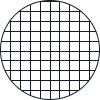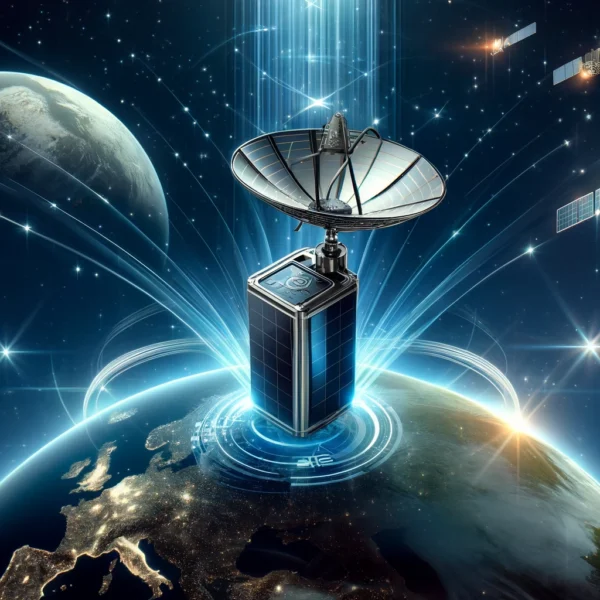- June 10, 2024
- 0 Comments
The Mathematics Behind
The concept of an interstellar Wi-Fi signal booster is a fascinating intersection of astrophysics, telecommunications, and advanced mathematics. Here, we break down the key mathematical principles and equations that make this futuristic technology possible.
1. Signal Propagation and Path Loss
Free Space Path Loss (FSPL):
The free space path loss represents how much a signal's strength decreases over a distance in a vacuum, such as space. The formula is given by:
$$ \text{FSPL}(dB) = 20 \log_{10}(d) + 20 \log_{10}(f) - 147.55 $$
where:
- d is the distance between the transmitter and receiver (in meters)
- f is the frequency of the signal (in Hz)
For example, considering a Wi-Fi signal operating at 2.4 GHz and a distance of 100 million kilometers (a bit less than the average distance from Earth to Mars):
$$ \text{FSPL} = 20 \log_{10}(100 \times 10^9) + 20 \log_{10}(2.4 \times 10^9) - 147.55 \approx 292.55 \, \text{dB} $$
2. Signal-to-Noise Ratio (SNR) and Bit Error Rate (BER)
The signal-to-noise ratio is crucial for determining the quality of the received signal. It is calculated as:
$$ \text{SNR} = \frac{P_{\text{signal}}}{P_{\text{noise}}} $$
where P_{\text{signal}} is the power of the received signal, and P_{\text{noise}} is the power of the noise.
A higher SNR typically results in a lower bit error rate (BER), which is essential for maintaining the integrity of data transmitted over long distances.
3. Antenna Gain and Beamforming
Antenna Gain:
A high-gain antenna focuses the signal into a narrow beam, increasing its strength in a specific direction. The gain of a parabolic antenna can be approximated by:
$$ G = \frac{4 \pi A}{\lambda^2} \eta $$
where:
- A is the area of the antenna aperture
- \lambda is the wavelength of the signal
- \eta is the efficiency of the antenna
Beamforming:
Beamforming technology allows antennas to dynamically adjust the direction of their signals. The array factor for a linear antenna array with N elements can be expressed as:
$$ AF(\theta) = \sum_{n=0}^{N-1} a_n e^{j(nkd \cos(\theta) + \phi_n)} $$
where:
- a_n is the amplitude of the n-th element
- k is the wave number (2\pi/\lambda)
- d is the distance between elements
- \phi_n is the phase shift of the n-th element
4. Amplification and Noise Figure
Low-Noise Amplifier (LNA):
The noise figure (NF) of an amplifier describes how much noise it adds to the signal. The effective noise temperature T_e is related to the noise figure by:
$$ T_e = (10^{\text{NF}/10} - 1) T_0 $$
where T_0 is the standard noise temperature (usually 290 K).
Power Amplifier (PA):
The power gain G_p of a PA is given by:
$$ G_p = \frac{P_{\text{out}}}{P_{\text{in}}} $$
where P_{\text{out}} is the output power, and P_{\text{in}} is the input power.
5. Error Correction and Signal Processing
To maintain data integrity, error correction algorithms are employed. One commonly used method is the Reed-Solomon error correction, which can correct errors in blocks of data. The number of errors t that can be corrected is given by:
$$ t = \frac{n - k}{2} $$
where n is the total number of symbols, and k is the number of data symbols.
Modulation Techniques:
Digital signal processing involves modulation techniques to encode data into carrier waves. For instance, Quadrature Amplitude Modulation (QAM) combines two amplitude-modulated signals into one channel, effectively doubling the bandwidth efficiency. The symbol rate R_s in QAM can be calculated by:
$$ R_s = \frac{R_b}{\log_2(M)} $$
where R_b is the bit rate, and M is the modulation order (e.g., 16-QAM, 64-QAM).
Conclusion
Creating an interstellar Wi-Fi signal booster is a complex but achievable goal, leveraging advanced mathematics and engineering principles. From understanding signal propagation and path loss to optimizing antenna gain and implementing robust error correction techniques, each component plays a critical role in ensuring reliable communication across the cosmos. This device is not just a theoretical possibility but a stepping stone towards making the universe a more connected place.










